Furniture design that’s aiming for the stars
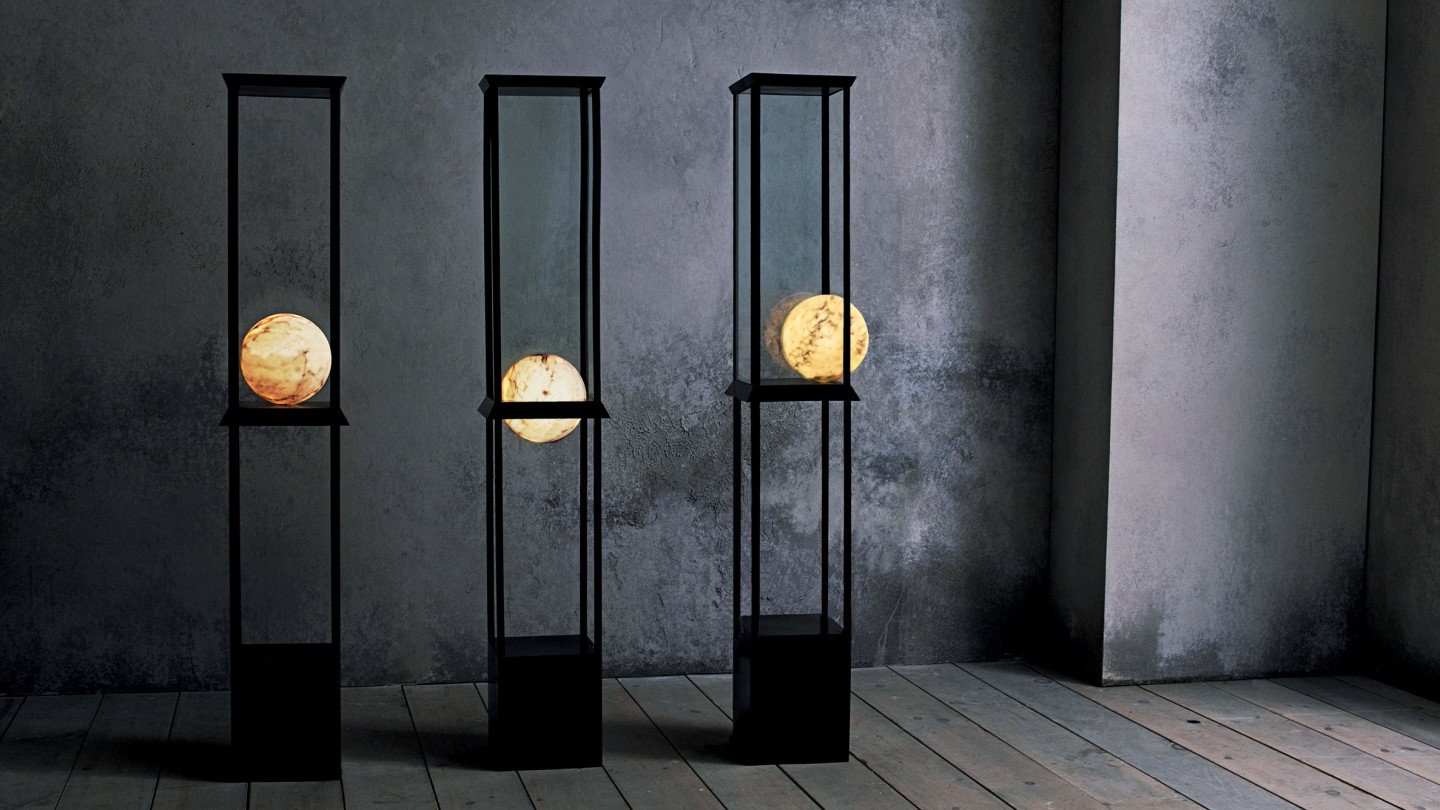
Roula Khalaf, Editor of the FT, selects her favourite stories in this weekly newsletter.
“The moon will always play a significant role in the human future,” says Francesco Risso, creative director of Marni, which showed its Moon Walk collection of furniture at Milan’s Salone del Mobile earlier this year (available online at LuisaViaRoma). “It is home to new prospects and new explorations. It represents a conquest, but also a starting point. It is a destination and yet the beginning of a new journey ahead.” Risso’s words resonate in a year that marks the 50th anniversary of the first lunar landing, which sparked a fascination in the design world that has crystallised in recent years, as creatives explore new forms that capture some of the optimism and excitement first experienced half a century ago.
As with most of the current crop of designers gazing skywards for inspiration, Marni’s collection is not informed by retro futurism but by a fresh approach. The Italian fashion brand’s Moon Walk stool is the result of a collaboration with Colombian artisans, producing bright and crafty pieces in which coloured, woven PVC is wrapped around curved iron. It is a reminder, lest we forget, that the moon is universal – seen by and influencing artisans everywhere, from pagans and remote tribes to Milanese aesthetes.
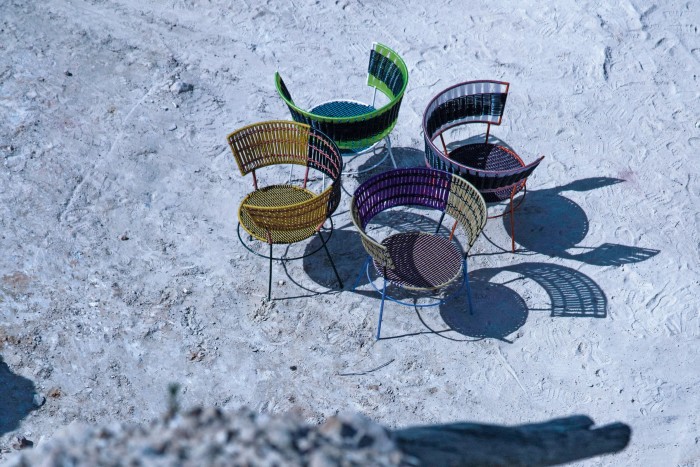
“The stars and the sky are the ultimate eternal and the ultimate unknown,” says designer Lara Bohinc, who was also in Milan to launch her Planetaria range, developing key themes from her earlier Orbit series. “It is what was here before us and what will be here after us. We know so little about it, which is the cause of constant fascination.” The wonders of the universe have captivated Bohinc since her early career as a jewellery designer. She first unveiled the Eclipse collection of necklaces and bracelets in 2003, and they have been bestsellers ever since; her new furniture and accessories – including the East of the Moon rug and the Lunar chair – bring her full circle, channelling graphic art deco glamour and astronomy.
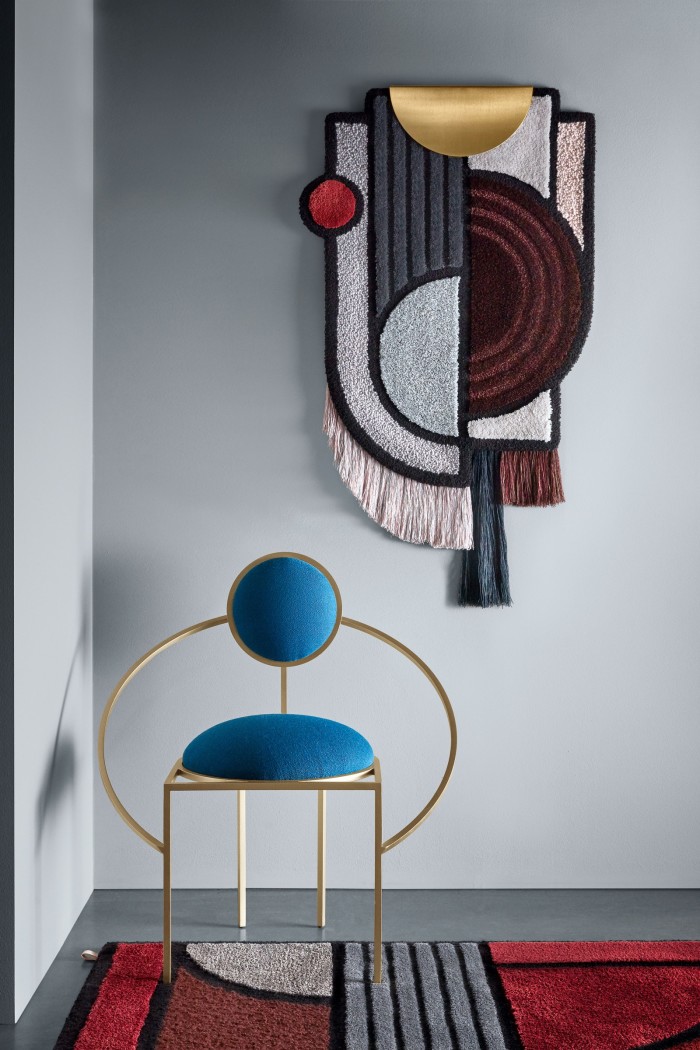
Bohinc’s Saturn pieces (including two sizes of pouffe) feature a design based on an assembly of split spheres, creating a comfortable, undulating surface; an aesthetic somewhere between that of Eileen Gray and HG Wells. At times, the influence seems almost unconscious. Her Apollo designs (including the loveseat and dining chair) are made of individual rolls of cushion suspended by metal loops that recall the rolled parchments and hanging globes of an astronomer’s lab but were, in fact, inspired by the architecture of Ricardo Bofill, specifically his conversion of an old Catalonian cement factory into La Fábrica, his home and studio. Bofill’s arched modernism aside, Bohinc likes the blank canvas these explorations of space facilitate on her mood board. “I love looking to the future. It allows for carte blanche, offering so much freedom,” she says. “But space is also eternal and timeless – and this is how I would like my designs to be seen. For me, it symbolises the theme of ancient modernity, which is the focus of much of my work.”
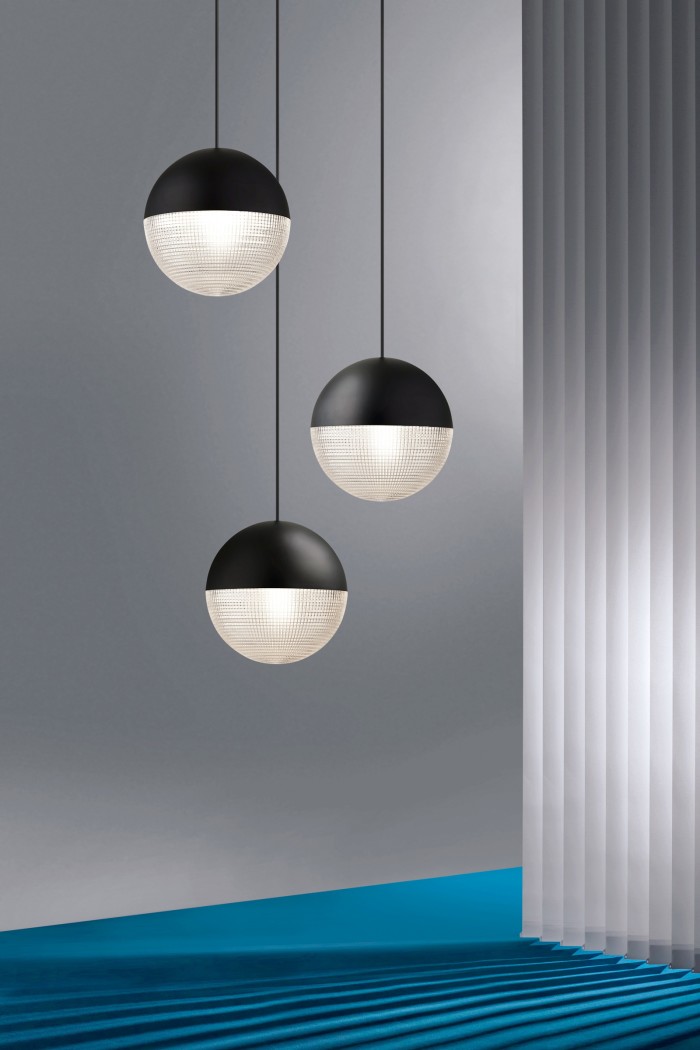
Space – so vast and unknowable, but only 62 miles above our heads – also offers a sense of escapism, which might explain why it’s so exciting for designers right now. “It makes you think about the bigger picture and how we sit within the universe,” says Lee Broom, who launched his Observatory collection last year, augmenting it in May with an assortment of small-scale spherical lighting called Little Lens Flair. The British designer has been channelling the stars, so to speak, since visiting a friend’s home in the Cotswolds, where he found himself transfixed by the night sky. “I experienced that intense blanket of stars that you see on a beautiful clear night – the constellations were so clearly marked,” he says. “I thought about connectivity and how a group of lights could be adapted to create installations that have a solar quality when in multiples. My Orion lights, for instance, can be hung either horizontally or vertically to create bespoke constellations of light with infinite adaptations.”
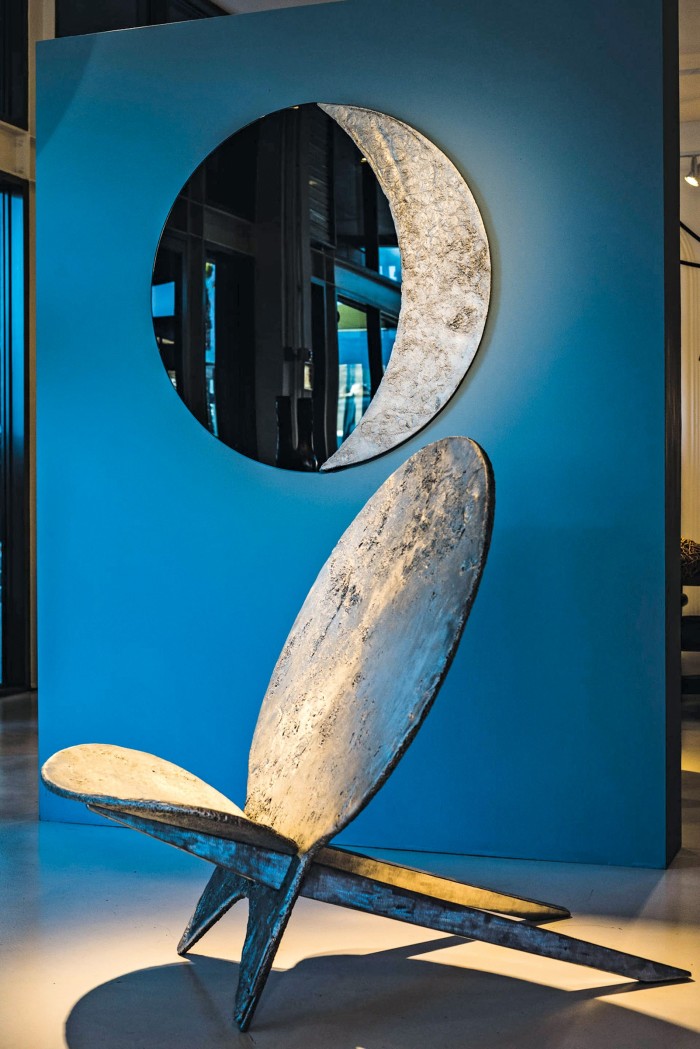
The moon makes for a great tabletop – choose an appropriate piece of marble and you’re halfway there. Space Copenhagen’s Moon tables for Gubi, the design house based in the same city, are an eloquent expression of this idea, fusing a full moon-shaped base with a solid marble or oak tabletop. The 2016 Lunar series by South African artist and craftsman Jesse Ede elevates the idea – his Moongazer chair, a one-off piece, has a back that becomes a hyper-detailed and textural metallic moon, while the low, slanted angles of the axis on which it sits force the user to recline and look up to the heavens. “I have a large telescope that I’m constantly tinkering with, and I spend a great deal of time researching various planets and stars,” he says. “I am, however, acutely aware that not everybody experiences them ‘up close’ in the way that I do. This is what I aim to achieve with my work – to immerse the viewer so they are able to explore the raw and beautiful surfaces of these planets.” As a result, his Lunar console features a series of rugged slate stones set – as if by zero gravity – into an aluminium frame. It’s Ede’s manipulation of metal that makes his work so distinctive and elemental. “I’m trying to celebrate the rawness of uncontrollable outcomes from processes uncommonly used,” he says. “Open sand-casting with metals such as aluminium and bronze helps me to achieve this. They are impervious to weather, which is important to me as I want my pieces to be able to live anywhere. I use Malmesbury slate and Paarl Grey granite – both are unique to the Cape Peninsula, my home.”
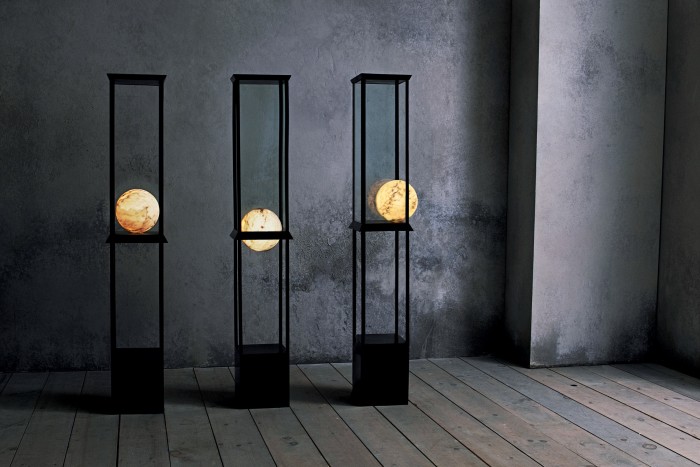
In New York, designer Anna Karlin also draws on the tactile and textural nature of materials. “The more we are steeped in technology, the more we seek out the natural,” she says. “I’m interested in how we manipulate natural materials into objects for human consumption, albeit visually. I think it’s very powerful when you create such an object with the human hand. Handling solid blocks of marble and meticulously carving them into hollow orbs or moons captures this for me.” Her Moon cabinets are part elegant light source, part art installation. The casing of each vitrine cabinet is black-finished steel, while each contains a Carrara marble sphere that has been hand-hollowed to allow for the insertion of a light source, creating a warm glow that is as enchanting as its inspiration. “The moon has such an ethereal quality to it, while the marble, by contrast, is such a hard surface – inverting that is part of the narrative of the piece,” she says.
Comments